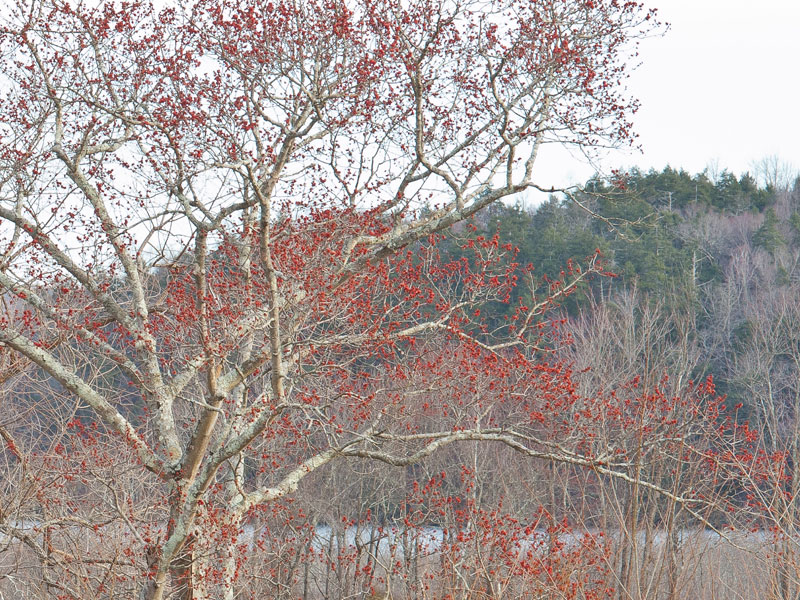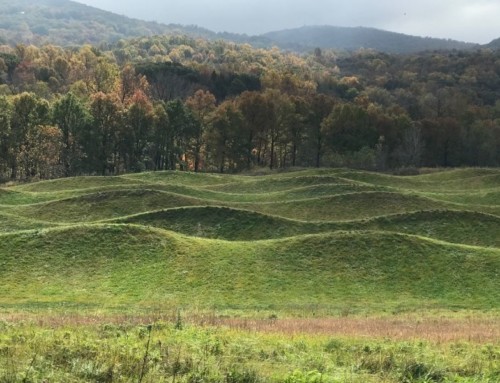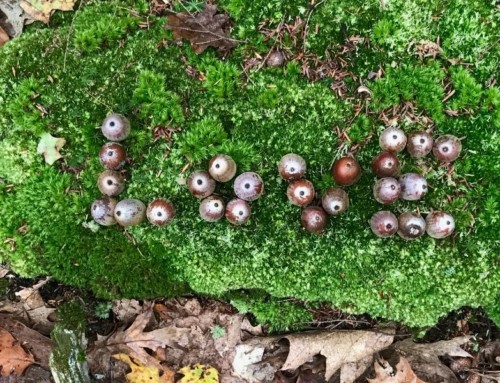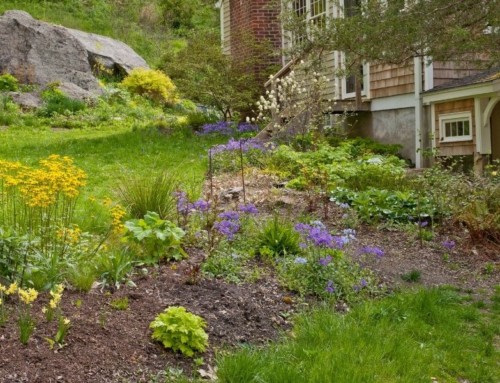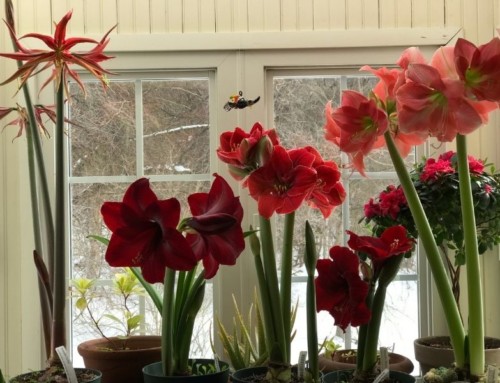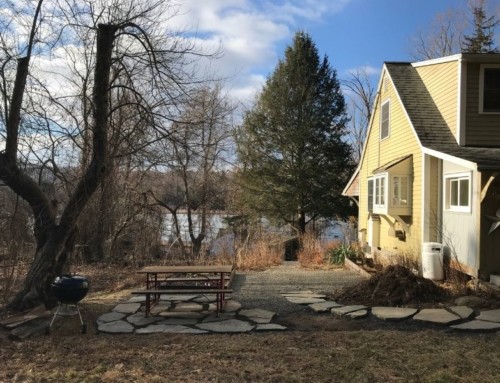On a warm day in late March, honey bees, likely from the farm at the north end of the pond, visited my Scilla mischtschenkoana. Spikes of these starry azure-ribbed light blue flowers bloomed cheerfully through a month’s snows, highs and lows, wind and downpours. I’ve been hoping they will self-sow.
April Fool’s Day – deer ate every blessed one. No hope of scilla seeds this year. Those stinkers are so desperate, they’re eating tough fibrous yuccas, unpalatable Christmas ferns, sedges and sage, nipping off garlic shoots. So what are the bees supposed to eat now?
Beekeepers can monitor their hives and do supplemental feeding. What about the early emerging native bees? Many are specialists, dependent on specific native plants. New England has 57 specialist bee species.
Mated queen bees need to fuel up with energizing nectar and protein-rich pollen, pronto. They must locate nesting sites, lay eggs and provide larval food for their brood within a very short time. Food is scarce at this critical life-cycle stage.
BUMBLEBEES
Bumblebees are super-efficient pollinators. They have insulating body hair and can shiver to regulate body temperature, enabling them to fly when it’s too cold or rainy for other species. They’re on the job early, pollinating spring flowers and fruit trees.
Farmers need bumblebees. Unlike most bees, bumblebees can buzz-pollinate by disengaging wings and vibrating flight muscles. Blueberries, cranberries, tomatoes, peppers, eggplants and other related plants have evolved to hold on to their sticky, tightly packed pollen until this buzzing releases it – in a bee-covering shower that assures ample cross-pollination.
WHY ARE POLLINATORS IMPORTANT?
Pollinators in general are Indicator species – they reflect the health of the entire ecosystem. And they’re Keystone species, meaning that many other species depend upon them for survival.
More than 80% of the plants on earth need animal pollinators. Their flowers evolved to attract pollinators with special scents, colorful flowers and other visual cues.
The reward – sweet nectar and protein-rich pollen for pollinators. The payoff for plants – genetically diverse seeds, full fruits and bountiful berries, ongoing survival of the species.
Wind-pollinated plants (grasses, conifers, oaks, ashes, birches, sugar maples and many other native deciduous trees) don’t put energy into producing showy, smelly or nectar-producing flowers because they don’t need to attract pollinators. Their scattershot strategy calls for quantity of lightweight, airborne pollen over quality – as allergy sufferers and fastidious car washers can attest.
CLIMATE CHANGE AND PLANTS FOR POLLINATORS
I’m really happy to see all sorts of bees busily buzzing in my yard. Diminutive single bloodroot, my earliest wildflower, opens only when the sun shines and passes by in a flash. Bloodroot pollen feeds early solitary bees, but my puny patch won’t feed the world of hungry insects out there.
Earlier, warmer springs (and later, warmer autumns) put co-evolved plants and pollinators out of sync. I’m all for native plants. But the early April buzz in my garden is around non-natives – a gazillion or so tiny spring bulbs, pulmonarias, hellebores and Cornelian cherry (Cornus mas), followed mid-month by forsythia, magnolias, a lawn full of dandelions and violets, and finally, native spicebush – because most native plants are still dormant.
Along the shores of the pond, though, and in a damp dip on the farm’s southern slope, I see glowing garnet-colored veils of color. Insect-pollinated native red maple trees (aka soft maples), Acer rubrum, are big and blooming, painting a trail of red up and down the watershed. Native bees and other pollinators follow this pathway, feeding on red maple flowers. Some just hang out looking for mating opportunities.
This meandering corridor of trees connects the dots between food, farm and natural habitat, contributing to the survival of two important endangered species – native bees and small farms.
